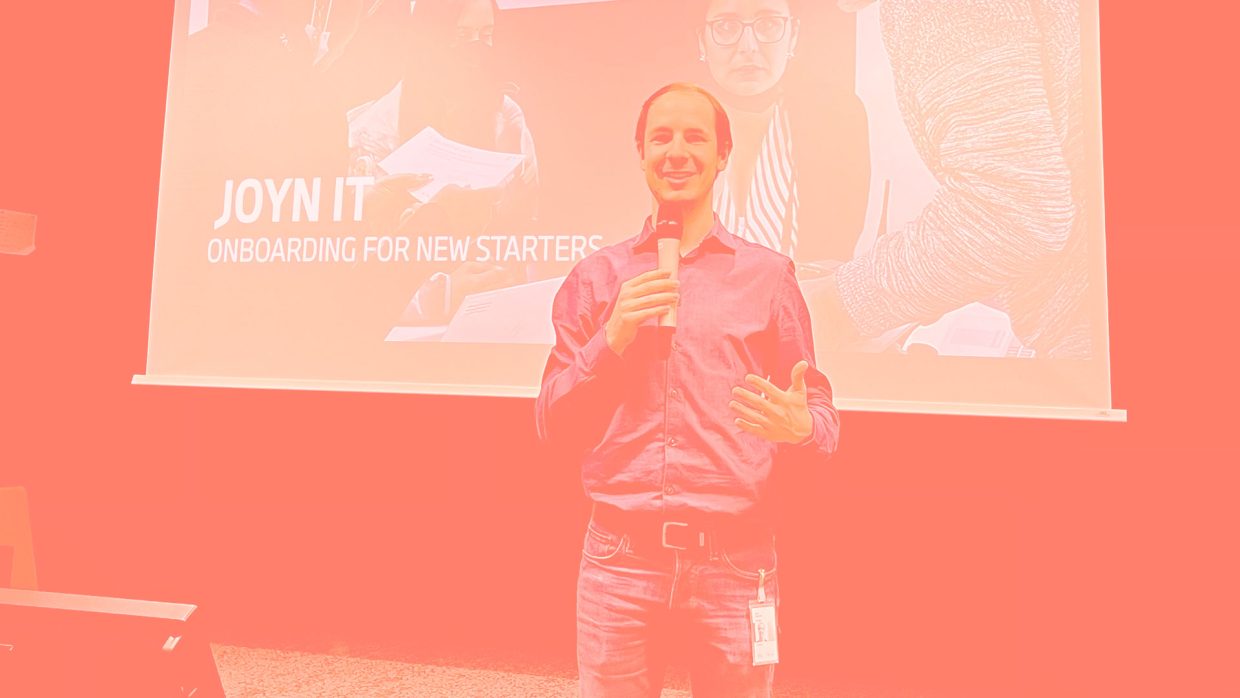“Every new challenge is a gateway to new experiences” – a tenet that guides anyone who likes to dare to do something.
Especially in everyday professional life, everyone knows the feeling of being challenged. Often from every day tasks, but sometimes also from their fellow human beings. Especially those of us who work a lot and closely with others know how to talk about these challenges – like Timo Schewik, coach at P3.
Exchange of experiences with one of our best trainers
On several days a week, he gives a wide variety of training sessions for our customers and thus also comes into contact with a wide variety of characters and their moods. “I’ve certainly given around 400 training sessions professionally. And you experience a lot in the process.”
Participants who swim against the tide are particularly memorable. “Normally, in the first five minutes of a course, you can already tell whether people are open to the topic or not. If I ask the group what brought the participants here, and they admit that they are not there voluntarily, but were sent, then I already know that I should keep an eye on these people. Because they could ask very critical questions.” But no coach should be afraid of these questions, Timo thinks. “A group never really wants to harm a coach. When participants start working against the trainer, it is usually because they disagree with some point in terms of content. This is also evident in such issues.” These can ensure – especially with inexperienced trainers – that they can easily get into swimming and are unsure how to get back into calm waters.

Professional tip for conflict management with training participants
Timo’s tip in such situations: Give the participants a chance to let out their negative energy – but in a constructive way for the group. “Give them the stage for a moment so that they can say in front of everyone what they don’t like about the current point. Often they only want to get rid of their dissatisfaction once, and there is not that much behind it. If you have given them the opportunity to get all of them off their chests for a minute, then they are usually very tame again. And: They can still be very valuable contributions for the other participants.”
Because such expressions of opinion often help to look at an issue from all sides and also to explore its limits. After all, not everything works in every environment. “The participants should recognize where certain approaches should not be used or where they do not make sense. But also why they can’t work in certain situations.” One example that comes to Timo’s mind here relates to the agile way of working. Many companies have noticed that the classic waterfall method is no longer sufficient for their environment. IT departments in particular often do well with the agile approach. But just because it works in this department doesn’t necessarily mean it works in every other department. Critical participants can help to consider the boundaries of both worlds.
But what to do when these critical questions lead to large discussions in the group and they seem to digress further and further from the actual topic of the training? Timo has a useful tip here: “I create a framework for them in which they can discuss. And then, as a moderator, I always guide them back on the path without interrupting them. So if it’s been going on for a while, at some point I say, for example: ‘Thank you for the contribution. We still have time for another one.’ Then another person can speak and then everyone knows that we will continue after that. That’s much more charming than actively interrupting.”
If you don’t dare to take this step as a coach, Timo also has a tip on how you can use the group yourself to control yourself and keep yourself on the way. Simply name five or six key points at the beginning of the training that are particularly important and that you want to get past. And communicate clearly every half hour what the next focus is. “If everyone is aware of this, then there is actually someone among the participants in every group who keeps pointing out that you have strayed from the actual topic. And so they actually steer themselves back on track.” And who knows, maybe that’s even the person who started the discussion at the beginning. So the recalcitrant participant would have become the coach’s greatest support after all.
Disclaimer:
Would you like to have a training at P3? Then take a look at our website for a suitable format, find a suitable date and register today:





